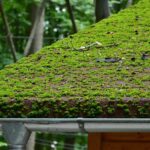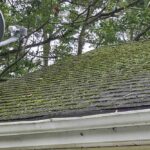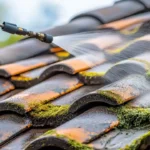High winds can pose a significant threat to your home’s roof, especially if the shingles are not properly secured. Understanding how to secure shingles in high winds is crucial for homeowners looking to protect their investment and avoid costly repairs. This article will guide you through essential steps and considerations for ensuring your roof remains intact during severe weather conditions.

The Importance of Roof Maintenance
Proper roof maintenance is the first step in preventing wind damage. Regular inspections can help you identify potential weak spots before they become major issues. For more tips on maintaining your roof, consider reading this comprehensive guide on roof maintenance.
Understanding Wind Ratings for Shingles
Before purchasing shingles, it’s important to know their wind rating. Shingles are rated based on their ability to withstand high winds. Choosing shingles with a higher wind rating can provide added protection during storms.
Types of Shingles
There are various types of shingles available, each with different wind ratings. Asphalt shingles, for instance, are popular due to their affordability and durability. However, premium options like metal or architectural shingles offer superior wind resistance.
Preparing Your Roof
Proper preparation can significantly enhance your roof’s ability to withstand high winds. Here are some steps to consider:
Inspect for Damage
Conduct a thorough inspection of your roof to identify any damaged or missing shingles. Repairing these areas can prevent wind from lifting them further.
Secure Loose Shingles
Use roofing nails and adhesive to secure any loose shingles. Ensuring they are tightly fastened will minimize the risk of wind damage.
Trim Nearby Trees
Trees near your home can pose a threat during high winds. Trim branches that could potentially fall and cause damage to your roof.
Professional Installation and Repairs
While DIY methods can be effective, sometimes professional help is necessary. Hiring a professional to install or repair your roof can ensure that it is done correctly and can withstand high winds.
Choosing the Right Contractor
Selecting a reputable contractor is crucial. Look for those with experience in wind-resistant roofing installations. For guidance on what to look for in a contractor, this guide on roof inspections can be helpful.
Additional Tips for Wind Resistance
There are additional measures you can take to improve your roof’s wind resistance:
Use Roof Cement
Applying roof cement under shingle tabs can provide extra security. This adhesive helps keep shingles in place even during strong gusts.
Install Roof Bracing
Roof bracing is an added structural support that can help your roof withstand high winds. This is particularly useful in hurricane-prone areas.
Regular Roof Inspections
Regular inspections are key to maintaining your roof’s integrity. They allow you to catch problems early and address them before they escalate. Consider setting a schedule for routine maintenance and inspections.

FAQs
How often should I inspect my roof?
It’s recommended to inspect your roof at least twice a year, preferably in the spring and fall.
Can I install shingles myself?
While DIY installation is possible, it’s best to hire a professional to ensure proper installation, especially in high-wind areas.
What should I do if I notice missing shingles?
Address missing shingles immediately to prevent further damage. It’s advisable to contact a roofing professional for repairs.
For more information on maintaining your roof after adverse weather, visit this essential roof maintenance guide.
This article contains affiliate links. We may earn a commission at no extra cost to you.








